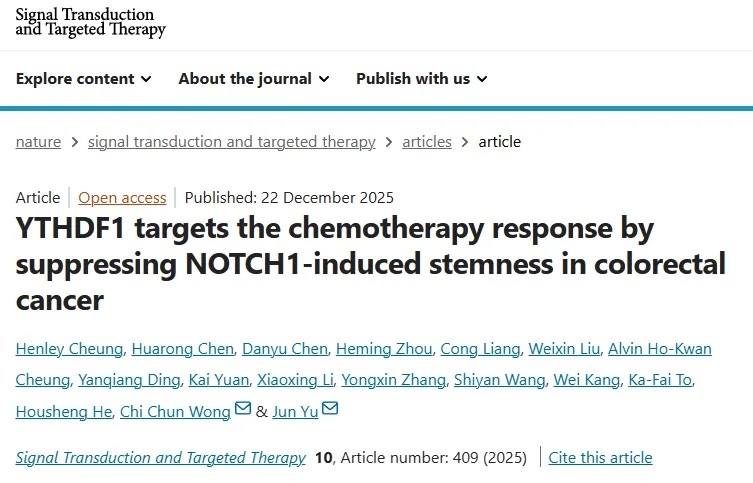Cancer Res.:阻断异位表达ATP合成酶抑制肺腺癌增殖
| 导读 | 7月20日,<em>Cancer Research</em>杂志在线报道,抑制异位表达在肺腺癌细胞膜上的ATP合成酶可诱导未折叠蛋白反应,从而触发细胞生长抑制。
科学家早已发现癌症细胞膜上存在线粒体F1F0-ATP合酶的异位表达,但它是否在此情况下发挥功能性作用仍不清楚。
<!--more-->
本研究发现,异位表达的ATP合成酶和电子传递链在... |
7月20日,<em>Cancer Research</em>杂志在线报道,抑制异位表达在肺腺癌细胞膜上的ATP合成酶可诱导未折叠蛋白反应,从而触发细胞生长抑制。
科学家早已发现癌症细胞膜上存在线粒体F1F0-ATP合酶的异位表达,但它是否在此情况下发挥功能性作用仍不清楚。
<!--more-->
本研究发现,异位表达的ATP合成酶和电子传递链在肺腺癌细胞膜上存在间断性分布,这对于支持癌细胞增殖是关键的。应用ATP合酶抑制剂黄绿青霉素,可诱导细胞周期阻滞和抑制肺癌细胞的增殖和不依赖于细胞锚定的肺癌细胞增长。
黄绿青霉素治疗后,蛋白质表达谱的分析表明,这种化合物能诱导未折叠蛋白反应(UPR),并伴随着磷酸化翻译起始因子2α(eIF2α),从而触发细胞生长抑制。黄绿青霉素增强eIF2α蛋白磷酸化,可被siRNA介导的UPR激酶PERK下调和抗氧化剂N-乙酰半胱氨酸联合治疗所逆转。这说明,黄绿青霉素治疗后,活性氧(ROS)促进了UPR。因此,UPR和活性氧协同升高启动了一个正反馈循环,最终阻止细胞增殖。
该研究结果确定了在肺癌细胞膜异位表达的ATP合酶的分子功能,为进一步研究以此为靶点的治疗方法打下了良好的基础。
<div id="ztload">
<div>
<div>
<img src="http://www.bioon.com/biology/UploadFiles/201207/2012072222251469.gif" alt="" width="113" height="149" border="0" hspace="0" />
<a title="" href="http://dx.doi.org/10.1016/j.cell.2011.10.017" target="_blank">doi:</a><a title="" href="http://cancerres.aacrjournals.org/content/early/2012/07/20/0008-5472.CAN-12-0567.abstract?papetoc" target="_blank">10.1016/j.cell.2011.10.017</a>
PMC:
PMID:
</div>
<div>
<br/><strong>Ectopic ATP synthase blockade suppresses lung adenocarcinoma growth by activating the unfolded protein response</strong><br/>
Hsin-Yi Chang1,Hsuan-Cheng Huang2,Tsui-Chin Huang3,Pan-Chyr Yang4,Yi-Ching Wang5, andHsueh-Fen Juan
Ectopic expression of the mitochondrial F1F0-ATP synthase on the plasma membrane has been reported to occur in cancer but whether it exerts a functional role in this setting remains unclear. Here we show that ectopic ATP synthase and the electron transfer chain exist on the plasma membrane in a punctuated distribution of lung adenocarcinoma cells where it is critical to support cancer cell proliferation. Applying ATP synthase inhibitor citreoviridin induced cell cycle arrest and inhibited proliferation and anchorage-independent growth of lung cancer cells. Analysis of protein expression profiles after citreoviridin treatment suggested this compound induced the unfolded protein response (UPR) associated with phosphorylation the translation initiation factor 2α (eIF2α), triggering cell growth inhibition. Citreoviridin-enhanced eIF2α phosphorylation could be reversed by siRNA-mediated attenuation of the UPR kinase PERK combined with treatment with the antioxidant N-acetylcysteine, establishing that reactive oxygen species (ROS) boost UPR after citreoviridin treatment. Thus, a coordinate elevation of UPR and ROS initiates a positive feedback loop that convergently blocks cell proliferation. Our findings define a molecular function for ectopic ATP synthase at the plasma membrane in lung cancer cells and they prompt further study of its inhibition as a potential therapeutic approach.
<br/>来源:生物谷
</div>
</div>
</div>
科学家早已发现癌症细胞膜上存在线粒体F1F0-ATP合酶的异位表达,但它是否在此情况下发挥功能性作用仍不清楚。
<!--more-->
本研究发现,异位表达的ATP合成酶和电子传递链在肺腺癌细胞膜上存在间断性分布,这对于支持癌细胞增殖是关键的。应用ATP合酶抑制剂黄绿青霉素,可诱导细胞周期阻滞和抑制肺癌细胞的增殖和不依赖于细胞锚定的肺癌细胞增长。
黄绿青霉素治疗后,蛋白质表达谱的分析表明,这种化合物能诱导未折叠蛋白反应(UPR),并伴随着磷酸化翻译起始因子2α(eIF2α),从而触发细胞生长抑制。黄绿青霉素增强eIF2α蛋白磷酸化,可被siRNA介导的UPR激酶PERK下调和抗氧化剂N-乙酰半胱氨酸联合治疗所逆转。这说明,黄绿青霉素治疗后,活性氧(ROS)促进了UPR。因此,UPR和活性氧协同升高启动了一个正反馈循环,最终阻止细胞增殖。
该研究结果确定了在肺癌细胞膜异位表达的ATP合酶的分子功能,为进一步研究以此为靶点的治疗方法打下了良好的基础。
<div id="ztload">
<div>
<div>
<img src="http://www.bioon.com/biology/UploadFiles/201207/2012072222251469.gif" alt="" width="113" height="149" border="0" hspace="0" />
<a title="" href="http://dx.doi.org/10.1016/j.cell.2011.10.017" target="_blank">doi:</a><a title="" href="http://cancerres.aacrjournals.org/content/early/2012/07/20/0008-5472.CAN-12-0567.abstract?papetoc" target="_blank">10.1016/j.cell.2011.10.017</a>
PMC:
PMID:
</div>
<div>
<br/><strong>Ectopic ATP synthase blockade suppresses lung adenocarcinoma growth by activating the unfolded protein response</strong><br/>
Hsin-Yi Chang1,Hsuan-Cheng Huang2,Tsui-Chin Huang3,Pan-Chyr Yang4,Yi-Ching Wang5, andHsueh-Fen Juan
Ectopic expression of the mitochondrial F1F0-ATP synthase on the plasma membrane has been reported to occur in cancer but whether it exerts a functional role in this setting remains unclear. Here we show that ectopic ATP synthase and the electron transfer chain exist on the plasma membrane in a punctuated distribution of lung adenocarcinoma cells where it is critical to support cancer cell proliferation. Applying ATP synthase inhibitor citreoviridin induced cell cycle arrest and inhibited proliferation and anchorage-independent growth of lung cancer cells. Analysis of protein expression profiles after citreoviridin treatment suggested this compound induced the unfolded protein response (UPR) associated with phosphorylation the translation initiation factor 2α (eIF2α), triggering cell growth inhibition. Citreoviridin-enhanced eIF2α phosphorylation could be reversed by siRNA-mediated attenuation of the UPR kinase PERK combined with treatment with the antioxidant N-acetylcysteine, establishing that reactive oxygen species (ROS) boost UPR after citreoviridin treatment. Thus, a coordinate elevation of UPR and ROS initiates a positive feedback loop that convergently blocks cell proliferation. Our findings define a molecular function for ectopic ATP synthase at the plasma membrane in lung cancer cells and they prompt further study of its inhibition as a potential therapeutic approach.
<br/>来源:生物谷
</div>
</div>
</div>
 腾讯登录
腾讯登录
还没有人评论,赶快抢个沙发